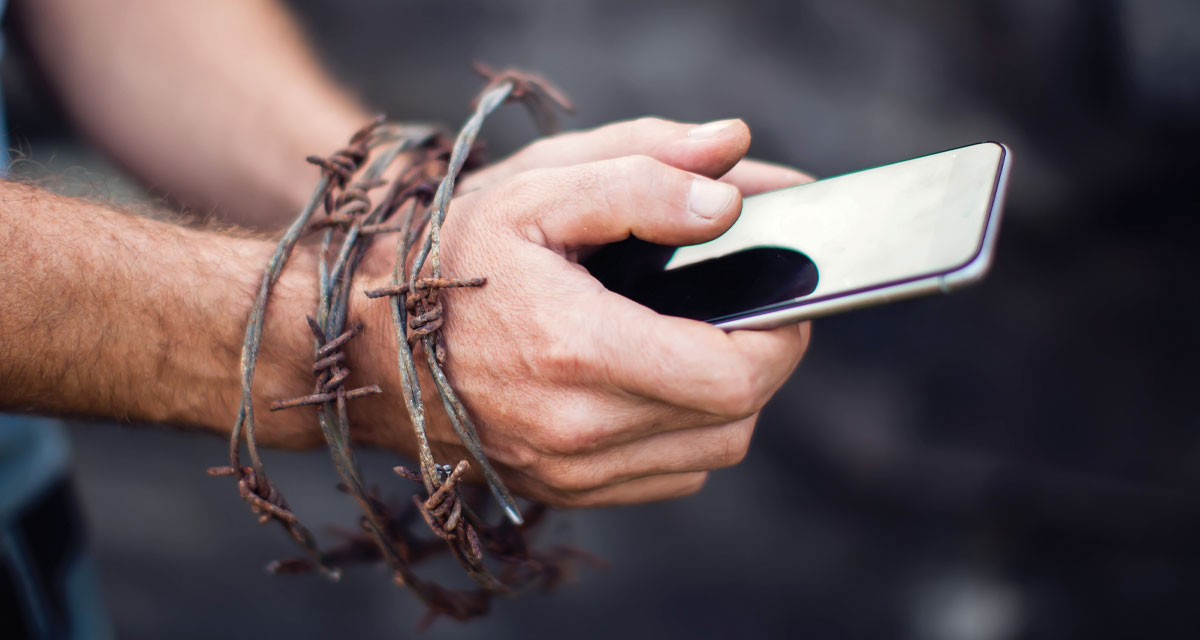Pride and humor are reactions by parents and onlookers to a toddler who can scroll through and change websites on an iPad without any guidance. At the age of eight, the phone mysteriously leaves its placement to be heard in another room, along with a child’s muffled giggling. Arriving at the age of a pre-teen, children have a complicated relationship with technology. There is an expectation of having a phone in and out of the classroom. A phone manages their social lives, connections, and maintains the organization of activities and appointments. The phone is the first thing their hand touches in a state of awakened consciousness and the last object before they fall asleep. How do parents ensure technology doesn’t result in addiction?
Obsession
What teens say:
- 92% go online throughout the day, while 24% claim to be online “almost constantly.”
- 94% access the Internet through their cell phones.
- 71% connect to Facebook, followed by Instagram (52%), then Snapchat (44%).
- 52% talk on a cell phone while driving, and 32% text while driving.
- 77% text and tweet messages while in bed.
- 66% claim cell phones negatively affect sleep.
Parents may describe their child’s cell phone use merely as an “obsession”; yet, an addiction goes well beyond the need to scroll, text, and talk. The phone is equivalent to receiving admiration, approval, and criticism. Rather than engaging in conversation, teens seek “likes” and responses from their posts and comments. Science claims there’s a biological component here similar to the brain’s reaction to a drug. Sounds from an alert or ring trigger the brain to release dopamine, which connects to pleasure and rewards.
How Did it Evolve?
Rather than ’tweens and teens hanging out at the mall or movie theater, social media arrived to replace the congregation of bodies. Rather than organizing a time and place for kids to interact, social media eliminates the structure and gathering locations that are off-limits; therefore, they can try on identities without worrying about adult oversight, and determine a way to express themselves while connecting with peers. “Identity” arrives in the form of selfies and videos, profanity, or judgmental behavior. As stress extends to a strained relationship or difficulty at school or home, ’tweens and teens hide behind a screen. With no place to turn, the phone becomes a coping mechanism for seeking praise and acceptance. Hiding from real-life-situations, anguish, and emotional pain is a form of escapism.
A Modern Condition
Addiction brings to mind a dependency on a drug, or an illegal act, such as stealing; yet, a cell phone addiction leads to levels of anxiety, depression, concentration, and sleep. Questions parents can ask themselves:
- Do my children avoid social interaction to use the phone?
- Do they complain about a sore neck or constant headaches?
- Is losing phone use the only punishment that matters?
- Without use of a cell phone or service, are their emotions characterized by anxiety, irritability, or uncontrollable violence?
- Is there any unexplainable change in mood, hygiene, eating, or sleep habits?
- Is the phone continuously checked, even without an indication of an alert?
- Is the phone used while walking, crossing the street, or driving?
Solutions
Teens and ’tweens may not realize why they need the phone for emotional, physical, and social support. Lecturing rarely results in favorable behavior; instead, there are viable ways to encourage conversation and create a healthy connection with and without technology.
Make a Plan: Have a family conversation regarding setting healthy limits and boundaries on phone use. Parents, too, need to model the designated house rules, such as removing phones from the dinner table, bathrooms, and family activities.
Bedtime Rules: Does a phone need to be on a pillow or the nightstand? By eliminating the beeps and rings, teens can sleep without interruptions. Make a plan to designate a centralized location for all household phones and computers, and the hour of “shut down.” Every member must adhere to the agreement!
Screen Time Setting: Devices, including televisions, computers, and some phones, have the option to set timers. Limiting hours of connectivity can ease anger and frustration levels, and enforce alternative activities, such as getting outdoors. Monitoring, from limiting phone usage to checking online behavior, can ensure healthy relationships and prevent bullying.
Regulating phone behavior is a responsible action. Plans may feel unnecessary; yet, they can guide ’tweens and teens to appropriately balance relationships and live in the real-world through the gift of technology.























